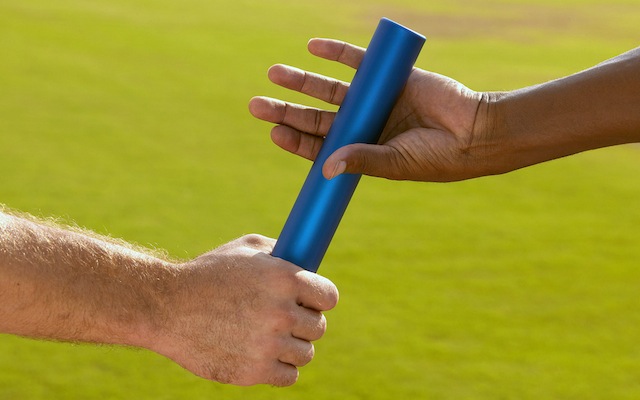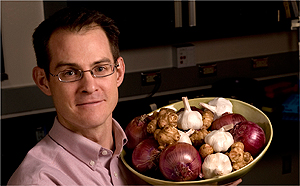| Grams | Ingredient | Details |
| 450 grams | Pepper, Red Bell, Raw | About 4 whole, medium sized red bell peppers |
DIRECTIONS
- Put an oven rack 1/3 of the way from the top of the oven (not at the VERY top!)
- Set the oven on broil or roast (basically at least 450 F, and it seems to work best if it’s convection heat, but not required)
- Place the whole peppers on a cookie sheet (cookies! Augh!! Let’s call it a vegetable roasting sheet from now on). Try to keep the peppers from touching
- Put the roasting sheet of peppers into the oven and take a look after 5 minutes. Oh, maybe 10. The top side of the skin should be starting to puff and blister.
- Turn the peppers 1/4 of the way over, so another portion can puff and blister. Keep doing this roughly every 5 minutes until all 4 sides are showing significant blisters, but NOT burned.
- Remove from the oven and once they’re comfortably cool, peel off the skins and remove the seeds
YIELDS 4 Servings
-
Fat – 10.2%; Protein – 16.6%; Carbs – 89.8%
-
Grams per serving: Fat – .2 grams; Protein – 1 grams; Carbs – 7 grams
-
Calories per serving: 30
COMMENTS
Before giving cooking advice, we gotta look at those ratios and grams. As you can see, munching red peppers as your main food all day long would NOT be ideal for a high-fat, low-carb diet. For a Type 1 or Type II diabetic who’s trying to minimize carbs, to encourage their cells to grow more sensitive to hormone signals, one medium bell pepper may use up 1/3 of their daily carb allotment. That’s simply in the world of raw pepperdom. It gets dicier through cooking. For once you roast these peppers, there’s a reason they taste sweeter than raw ones (and they do). Roasting breaks down the fibrous structure of the raw pepper, making the sugars within more quickly available to your body. In other words, even though they’re a “low-sugar” vegetable, if you ate a lot of roasted peppers, they could start to push up your blood sugars, discombobulate your hormones and all the rest. This is why everything in moderation is a good idea. Speaking of moderation, notice that even this piddly little vegetable does contain protein. That’s one reason why it’s good to track your proteins and remind yourself you don’t really need to eat a big chunk of meat at every meal (or even a little chunk). You’re often eating proteins when you don’t expect them.
So, if this is not an ideal food for a low-carb, high-fat, adequate protein diet, why do we include it? Because roasted red peppers are fun to make, and they’re a great ingredient to combine into higher fat recipes, such as Roasted Red Pepper Pesto.
That’s enough food pulpit pounding for now. Let’s get back to cooking tips. First, when you roast a pepper, don’t try to be thorough about it, for instance, making sure that the whole skin turns black, or that every inch is blistered. If you do this, you’re likely to dehydrate the peppers to such an extreme degree, the tasty pepper flesh will have evaporated into blackened char. You do not want to make a meal of roasted pepper blackened char. It’s not only untasty, but it’s also full of mutagenic charred former food particles which are not particularly good for health. Oops! We’re wandering into health issues again. Let’s stick to food preparation. Okay. So you have pulled out the roasting sheet in time, and the peppers are blistered but not blackened into tufts that are as light and unappealing as torch-blasted feathers. Instead, as you become a practiced roasting chef, your peppers will be plump and juicy, with skins that peel off as easily as a silk scarf falls from a magician’s hat. There the peppers are now, red and glistening as kisses. You can use them in your favorite dish. You can freeze them so you can use them much later. You can put some aside for using now and then, throughout the week. They are the best of raw materials – well, roasted raw materials.
Here’s a shortcut–you can simply buy roasted peppers as jars of pimentos (though somehow, when they’re not homemade, their brilliant color and flavor goes down a notch). And there are other techniques for peeling roasted peppers. You can put them while hot in a paper bag then fold over the lid, and the peppers will steam and be even easier to peel. You can forget about the sweet bell peppers and do this same thing with poblanos, or hatch chiles. You can find those hotter chiles at some southwestern markets in late summer, with farmers spinning a big roasting cage, the peppers bouncing around in it like tokens at a gambling place. These roasted peppers are a precious find, and often at their least expensive when you find them this way. Only, so many generally requires freezing them, and my friends who do this say they’d like some ideas about how to unstick them to use in smaller batches throughout the year.
However you decide to do it, think of these roasted peppers as edible jewels that can add bright flavors to many meals.





